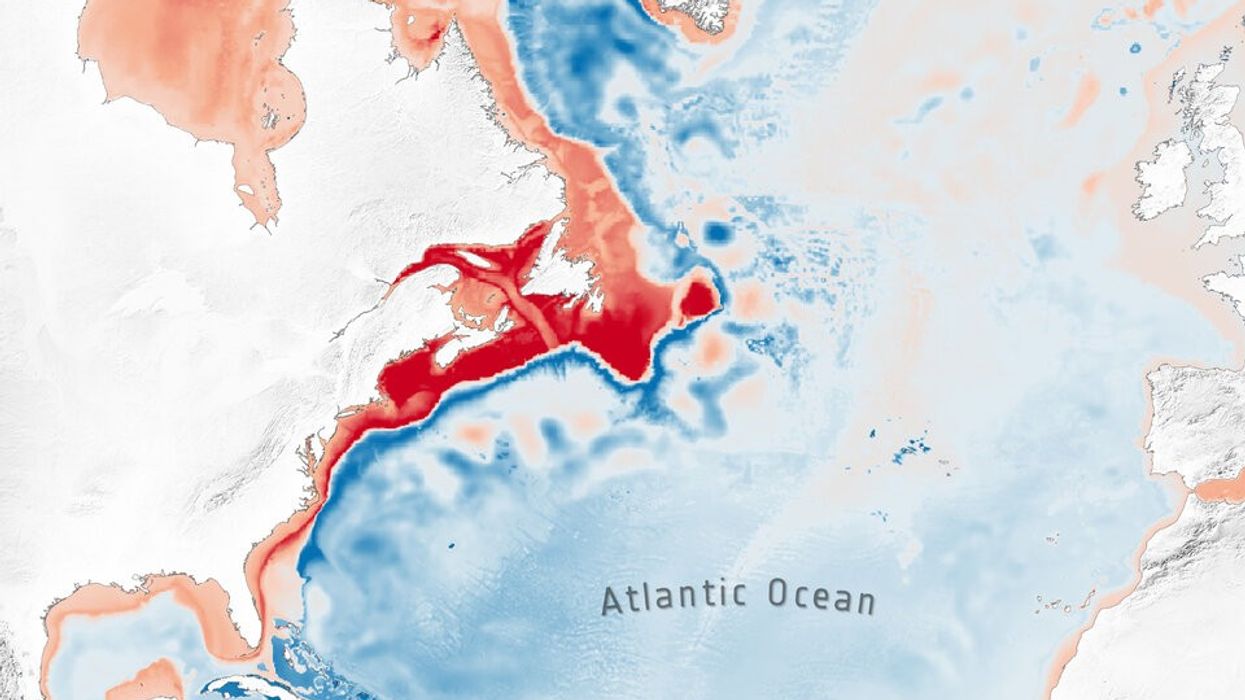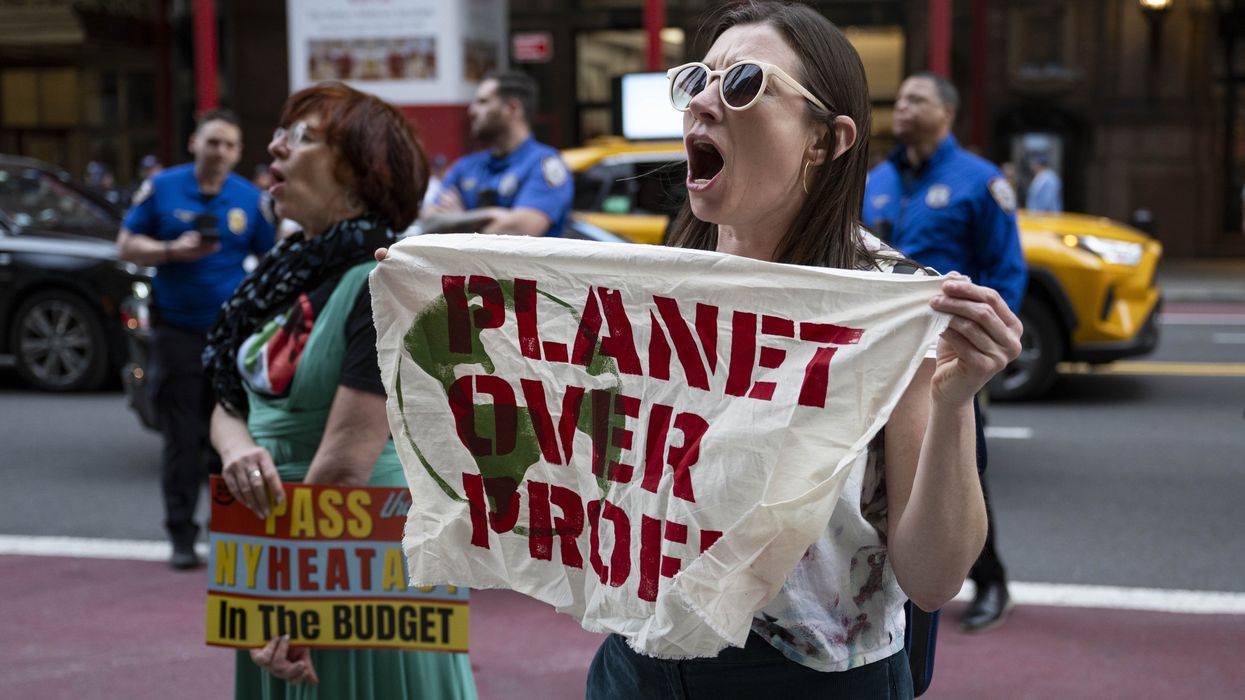"If, in fact, a majority of people in your community care about climate change, and yet elected officials aren't responding to that, that's a deficit in democracy," CCNow co-founder Kyle Pope told Common Dreams. "Why is that? What's to be done about it? Where do we go from here?"

'A Media Problem'
The 89% Project is designed as a yearlong initiative that kicks off with a joint week of coverage coinciding with Earth Day. Another week of coverage will take place in the fall in the leadup to the United Nations climate conference (COP30) in Belém, Brazil. In between, CCNow will host webinars and gatherings, promote the project on social media, and analyze the coverage to see what newsrooms are focusing on and what support they may need to continue telling climate stories going forward.
Already, major media outlets have signed on to participate, with The Guardian and Agence France-Presse acting as lead partners. Other core partners include The Nation, Rolling Stone, Scientific American, TIME, Canada's National Observer, Germany's Deutsche Welle, Italy's Corriere della Sera, Japan's Asahi Shimbun, and Arab Reporters for Investigative Journalism. However, media outlets don't need to sign up ahead of time in order to participate. They simply need to publish a story related to the 89% theme during the coverage week, include a logo and tagline with their article, and email their coverage to editors@coveringclimatenow.org.
CCNow encourages stories "focused on the people who comprise the 89%: Who are they? How do their numbers vary across countries, genders, and ages? What kinds of climate action do they want governments to take, and what are the main obstacles to such action?" its website explains.
"It's also for newsrooms to internalize and newsrooms to say, OK, our audience really cares about this. We can't silo it. We can't get distracted by other things."
The project builds on the work CCNow has been doing since it first broke onto the scene five years ago with a week of climate-focused coverage in September 2019 that generated some 3,400 pieces from over 300 partners. CCNow's emergence coincided with the apex of Greta Thunberg's Fridays for Future school strike movement and a growing awareness globally of the climate crisis and its stakes.
In the five years since, Pope said there has been a decline in outright "climate silence" from newsrooms, as well as "both-sidsing" the issue despite an overwhelming scientific consensus that the Earth is heating due to human activity. However, he has noticed a persistent pattern of "leaving climate out of stories where it should be." For example, the bulk of coverage of January's catastrophic Los Angeles wildfires did not mention climate.
The impetus for the 89% Project grew partly from frustration over hearing the same refrain from newsrooms.
"They kept telling us, oh, well, this is a topic that's really divisive. This is a topic that most people want to avoid. This is a topic that is very politically split. And then when we looked at data, surveys from all over the world, we kept seeing that that wasn't true, that in fact, a majority of the people on the planet care about this," he told Common Dreams.
The project was also inspired by a "confluence" of studies that emerged in 2024 finding that an "overwhelming majority" of people worldwide wanted climate action. These included the study that the 89% figure is drawn from, which was published in Nature Climate Change in February of 2024 and was based off of a Global Climate Change Survey included in the 2021-22 Gallup World Poll, which was administered to 129,902 people in 125 countries.
Another example CCNow held up was a U.S.-based survey, published in late January by the Yale Program on Climate Change Communication and George Mason University Center for Climate Change Communication and conducted after the November 2024 election, which found that more than 70% of registered U.S. voters favored climate policies such as regulating carbon dioxide as a pollutant, staying in the Paris agreement, and increasing solar and wind energy.
CCNow first began to discuss the 89% Project in the fall of 2024 and announced it publicly in late January.
The primary goal, according to Pope, is to encourage the mainstream newsrooms to change their thinking around whether or not their audience wants to hear climate stories.
"Our orientation is, we look at everything from a media point of view, and we sort of saw it as a media problem," Pope said.
He hopes newsrooms will learn the importance of maintaining climate coverage even as other breaking stories demand their attention.
"It's also for newsrooms to internalize and newsrooms to say, OK, our audience really cares about this. We can't silo it. We can't get distracted by other things," he explained.
Pluralistic Ignorance
While the 89% Project is aimed at convincing media organizations that their audiences want climate coverage, another goal is to make those audiences aware of each other.
"One of the really remarkable things about this polling is the 89% doesn't think they're in the majority," Pope said. "They think that their concern about climate makes them an outlier. That's not true. You're not an outlier. You're just like most people in your community."
For example, the 89% study also found that 69% of people would be willing to give 1% of their monthly household income to help combat climate change, yet they only thought 43% of their fellow citizens would be willing to do the same.
"Almost everybody dramatically underestimates the level of concern and support for action on climate change."
Anthony Leiserowitz, who directs the Yale Program on Climate Change Communication, told Common Dreams that the academic term for this is "pluralistic ignorance."
"It basically refers to the fact that most of us don't know what's in other people's heads," he said, whether this is family members, strangers we've just met, or the larger groups of people with whom we share a country and planet.
"What we see consistently," he continued, "and this is true across the board, of the general public as well as people in Congress, and news editors, and corporate leaders, and on and on, is that almost everybody dramatically underestimates the level of concern and support for action on climate change."
What the 89% Project has the chance to do, Leiserowitz said, "'is to actually help hold a mirror up to society and help them see themselves."
In a way, the project is fulfilling a hope laid out by the paper's authors.
"Importantly, these systematic perception gaps can form an obstacle to climate action," the study authors wrote. "The prevailing pessimism regarding others' support for climate action can deter individuals from engaging in climate action, thereby confirming the negative beliefs held by others. Therefore, our results suggest a potentially powerful intervention, that is, a concerted political and communicative effort to correct these misperceptions."
And Leiserowitz said he thought it was important that the media step up to make this effort.
"The media is one of the primary ways that anybody who knows about, learns about, becomes engaged with this issue," he said. "Most people are not going out and reading the [Intergovernmental Panel on Climate Change] report on their own or conducting climate science experiments in their backyard. That's not how they're going to learn about it."
Therefore, he said, CCNow's effort to "really encourage and build a community of practice around reporting on climate change is super, super important. The world cannot deal with this issue unless we're talking about it."
Democracy Deficit
Another potential consequence of making the 89% aware of each other is making them aware of the extent to which their political leaders are failing to represent them.
Pope anticipated the coverage might prompt readers to think: "Maybe we should all start questioning our elected officials more. Why aren't you taking climate into account? If we all believe in this, why aren't you doing this?"
The 89% Project is global in scope—and Pope said it was not motivated by the victory of climate-denying President Donald Trump in the November 2024 U.S. election.
"Americans have been growing increasingly concerned and even alarmed about climate change over the past decade. So nobody was voting for this."
However, Pope said, the project did become "more urgent as this new administration has taken a hold and has really gone on the attack on climate policy."
One thing coverage may bring out is the gap between U.S. public opinion and Trump actions such as withdrawing from the Paris agreement, declaring an energy emergency to encourage more oil and gas drilling, gutting environmental regulations, and defunding climate science.
Pointing to Yale's post-election survey cited by CCNow, Leiserowitz said, "This is not what people want."
"It's pretty clear this election was not a referendum on climate change," he added. "Americans have been growing increasingly concerned and even alarmed about climate change over the past decade. So nobody was voting for this."
While Pope acknowledged that "U.S. politics right now toward climate are particularly odious," about half CCNow's collaborators are based in other countries, and they also report a false assumption that climate action is more controversial than the data suggests.
"This general idea that this is a divisive issue, that it's a hot-button topic, that it's something that our audience finds political, those themes you see over and over again," he said.
In the U.S. under Trump, but in other countries as well, the democracy deficit between public opinion and government action goes hand-in-hand with a government attack on democratic freedoms to call for climate action. Trump has also targeted members of the press for their reporting decisions, such as banning The Associated Press from White House briefings over its refusal to refer to the Gulf of Mexico as the Gulf of America in its style guide.
Pope said that running joint coverage weeks was a good way to encourage newsroom collaboration amid tight resources. Could there also be safety in numbers against government repression?
Pope said that a unified front was harder to attack, though he noted that climate journalists have faced threats and social media trolling for years, and that the Trump administration was likely to continue those attacks regardless. However, he urged against panic.
"I think one of the reasons that the 89% framing is appealing to us is it's not a fear-based idea," he said. "In fact, it's the opposite. It's like we're all in this together, and a lot of us, not just people in the climate movement, not just people who work in this area, but a lot of just our neighbors really care about this. So let's not cower."
This story is part of The 89 Percent Project, an initiative of the global journalism collaboration Covering Climate Now.




